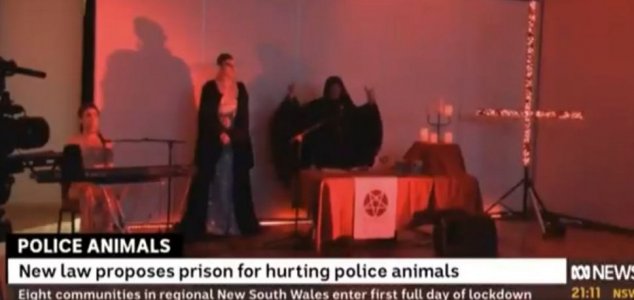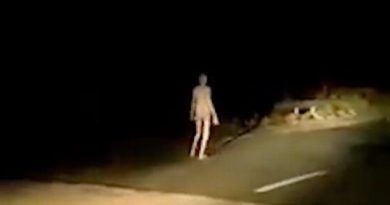ABC Live News interrupted by Satanic ritual
Australian TV viewers got a brief glimpse into a hellish ritual this week when a news broadcast suddenly cut to a satanic ceremony. The network was doing a segment on police dogs, with the usual video footage of various bureaucrats.
Toward the end, however, the segment cut to two seconds of footage of a ritual that involved the words “hail Satan,” as posted online by ABC’s Media Watch
ABC's satanic slip-up. What was going on here? @abcnews pic.twitter.com/D1dWfjOYhM
— Media Watch (@ABCmediawatch) August 19, 2021
Broadcaster Yvonne Yong managed to keep a straight face after emerging from the video mixup. After a brief pause, she moved right onto the next story.
Satanism is a group of ideological and philosophical beliefs based on Satan. Contemporary religious practice of Satanism began with the founding of the atheistic Church of Satan in America in 1966, although a few historical precedents exist. Prior to the public practice, Satanism existed primarily as an accusation by various Christian groups toward perceived ideological opponents, rather than a self-identity. Satanism, and the concept of Satan, has also been used by artists and entertainers for symbolic expression.
Accusations that various groups have been practicing Satanism have been made throughout much of Christian history. During the Middle Ages, the Inquisition attached to the Catholic Church alleged that various heretical Christian sects and groups, such as the Knights Templar and the Cathars, performed secret Satanic rituals. In the subsequent Early Modern period, belief in a widespread Satanic conspiracy of witches resulted in mass trials of alleged witches across Europe and the North American colonies. Accusations that Satanic conspiracies were active, and behind events such as Protestantism (and conversely, the Protestant claim that the Pope was the Antichrist) and the French Revolution continued to be made in Christendom during the eighteenth to the twentieth century. The idea of a vast Satanic conspiracy reached new heights with the influential Taxil hoax of France in the 1890s, which claimed that Freemasonry worshipped Satan, Lucifer, and Baphomet in their rituals. In the 1980s and 1990s, the Satanic ritual abuse hysteria spread through the United States and the United Kingdom, amid fears that groups of Satanists were regularly sexually abusing and murdering children in their rites. In most of these cases, there is no corroborating evidence that any of those accused of Satanism were actually practitioners of a Satanic religion or guilty of the allegations leveled at them.
Since the 19th century, various small religious groups have emerged that identify as Satanists or use Satanic iconography. The Satanist groups that appeared after the 1960s are widely diverse, but two major trends are theistic Satanism and atheistic Satanism. Theistic Satanists venerate Satan as a supernatural deity, viewing him not as omnipotent but rather as a patriarch. In contrast, atheistic Satanists regard Satan as a symbol of certain human traits.
Contemporary religious Satanism is predominantly an American phenomenon, the ideas spreading elsewhere with the effects of globalization and the Internet. The Internet spreads awareness of other Satanists, and is also the main battleground for Satanist disputes. Satanism started to reach Central and Eastern Europe in the 1990s, in time with the fall of the Soviet Union, and most noticeably in Poland and Lithuania, predominantly Roman Catholic countries.



